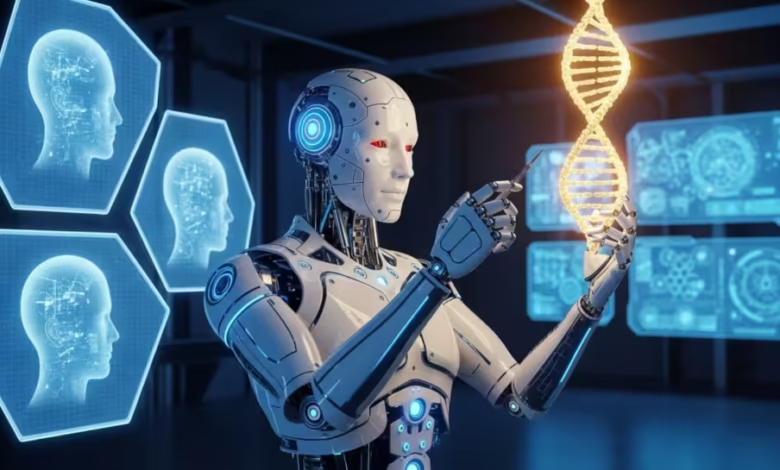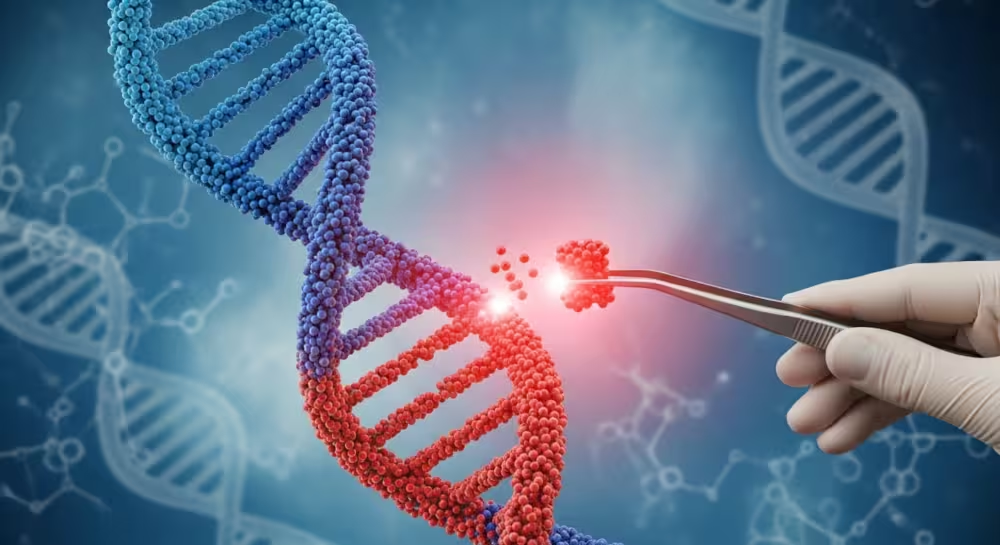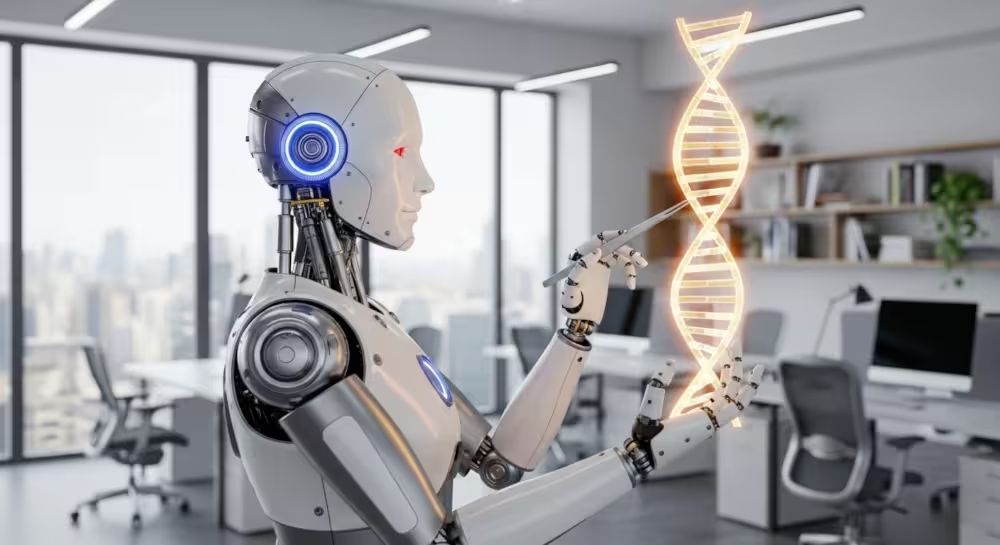AI in Genetic Engineering: Designing Life with Algorithms

This blog post explores the transformative role of AI in genetic engineering, highlighting its impact on the field. It delves into various AI-driven gene editing techniques and their implications showcasing how algorithms are instrumental in designing life by manipulating genetic codes. The article presents the advantages of AI in genetic design, such as enhanced precision and efficiency, while also addressing limitations and ethical considerations that accompany these technologies. In conclusion, the post discusses future directions for AI in genetic engineering and offers actionable insights for researchers and practitioners looking to navigate this evolving landscape. Overall, it provides a comprehensive overview of AI in genetic engineering and its potential to revolutionize biotechnological advancements.
Introduction To AI In Genetic Engineering And Its Impact
The integration of AI in genetic engineering represents a groundbreaking shift in the field of biotechnology. This modern approach leverages advanced algorithms and data analysis to enhance genetic design and manipulation, promising enormous potential for advancements in healthcare, agriculture, and ecological conservation. As we venture into a world where biological systems can be intelligently designed with precision, the synergy of AI in biotech with synthetic biology emerged as a pivotal mechanism that transforms how researchers approach genetic modifications.
Key Areas of AI in Genetic Engineering
- Predictive Modeling: Utilizing AI to forecast genetic variations and their potential outcomes.
- Data Analysis: Processing vast datasets to uncover patterns in gene expression and functionality.
- Design Automation: Streamlining the creation of genetic constructs through automated techniques.
- Genome Editing: Enhancing precision in techniques such as CRISPR through algorithmic support.
- Personalized Medicine: Tailoring medical treatments based on genetic profiles analyzed by Aİ
- Crop Improvement: Employing AI to design traits in plants that improve yield and resistance.
- Ethical Safeguarding: Implementing AI frameworks to address ethical concerns in genetic manipulation.
AI’s role in genetic engineering does not merely focus on technical advancements; it also governs the ethical discussions surrounding synthetic biology. With each innovation, the need for comprehensive frameworks becomes increasingly critical to uphold safety and moral responsibility in genetic modifications. As we explore these cutting-edge techniques it becomes imperative to maintain a balance between technological progress and ethical considerations to ensure a beneficial impact on society.
Exploring AI Gene Editing: Techniques And Implications

The integration of AI in genetic engineering has revolutionized the methods of gene editing, particularly through the pioneering technology known as CRISPR. This powerful tool allows for precise alterations in the DNA sequence, and when enhanced with artificial intelligence, it has the potential to increase the efficiency and accuracy of genetic modifications. By leveraging algorithms to analyze genetic data, researchers can identify the most effective targets for editing, ultimately leading to breakthroughs in disease treatment and agricultural improvements.
As we delve deeper into AI gene editing, it’s essential to recognize its diverse applications across several fields. Enhanced data analysis capabilities not only streamline the selection of gene targets but also optimize the editing process itself. The combination of CRISPR and AI facilitates rapid testing of various genetic modifications providing insights that were previously unattainable. This synergy opens up new avenues for personalized medicine, where tailored treatments can significantly improve patient outcomes.
| Application | Description | Implications |
|---|---|---|
| Disease Treatment | Targeting specific gene mutations associated with diseases | Potential cure for genetic disorders |
| Agricultural Advancements | Enhancing crop resilience and yield | Food security and sustainability improvements |
| Biological Research | Understanding gene functions and interactions | Accelerated scientific discovery |
Despite the promising prospects of AI-driven gene editing, there are considerable challenges that scientists must navigate. Ethical considerations surrounding genetic modifications particularly concerning human subjects demand comprehensive discussions and regulatory frameworks. Additionally, the need for robust data privacy protocols is paramount as sensitive genetic information can be exploited if not secured adequately. As researchers continue to explore the implications of AI in genetic engineering, finding a balance between innovation and ethical responsibility remains critical.
Steps In AI Gene Editing
- Identify target genes related to the condition or trait of interest.
- Utilize AI algorithms to analyze vast datasets for optimal CRISPR targets.
- Design the CRISPR constructs with specific guide RNA sequences.
- Conduct simulations to predict editing outcomes and off-target effects.
- Perform laboratory experiments to validate the effectiveness of the edits.
- Assess long-term implications and safety of the genetic changes made.
- Implement findings into practical applications such as therapies or crop improvements.
Continuing to innovate with AI gene editing techniques presents a landscape of exciting possibilities. However, the importance of ethical frameworks and safety protocols will be paramount as we forge ahead into uncharted territory. As the dialogue around AI and genetics evolves it remains crucial to foster responsible practices that ensure advancements benefit humanity as a whole.
Challenges in AI-Driven Genetic Design
One major challenge in the realm of AI-driven genetic design is the accurate prediction of off-target effects where unintended genetic modifications may occur. As promising as these tools are, ensuring their safety and efficacy requires rigorous validation processes. Moreover, public acceptance of genetic engineering technologies hinges on transparent communication about their implications and the management of risks associated with their use.
Advantages And Limitations Of AI In Genetic Design

AI in genetic engineering offers transformative potential in the field of genetic design, enabling precise control and manipulation of genetic materials. The ability of AI to analyze vast datasets and learn complex patterns can significantly enhance the design of synthetic biology applications. As a result, researchers can create tailored organisms with desired traits leading to advances in agriculture, medicine, and environmental sustainability. However, while the advantages are promising, it is essential to consider the limitations that accompany this technological evolution.
| Advantages | Limitations | Implications |
|---|---|---|
| Enhanced precision in genetic modifications | Ethical concerns regarding genetic manipulation | Need for robust regulatory frameworks |
| Accelerated research and development cycles | Potential for unintended consequences | Importance of thorough testing and validation |
| Cost reduction in genetic experiments | Limited interpretation of complex biological systems | Collaboration across disciplines essential |
| Automation of data analysis and gene selection | Data privacy concerns | Need for ethical guidelines in data usage |
To further understand the implications of employing AI in genetic design, it’s crucial to weigh its pros and cons. This consideration allows scientists and stakeholders to make informed decisions about the deployment of AI technologies. Below are some key points highlighting the advantages and limitations of AI in genetic engineering:
Pros and Cons Of AI In Genetic Design
- Pros: Increased efficiency in genetic data analysis.
- Pros: Improved accuracy in identifying gene functions.
- Cons: Ethical dilemmas surrounding ‘designer organisms.’
- Cons: Risk of monopolization by large tech companies.
- Pros: Enhancement of synthetic biology applications.
- Cons: Need for comprehensive regulations in genetic practices.
The intersection of AI and genetic design brings forth a myriad of possibilities while simultaneously raising significant challenges. Continued dialogue and research are imperative to navigate the complexities of synthetic biology while ensuring ethical standards are upheld. As AI technology advances fostering a collaborative framework among scientists ethicists and policymakers will be essential for harnessing its potential responsibly.
Future Directions And Actionable Insights
The integration of AI in genetic engineering is poised to revolutionize our understanding and manipulation of the biological world. As we’ve explored throughout this article, the synergy between artificial intelligence and genetic design offers unprecedented opportunities for innovation in fields like agriculture, medicine, and even ecological conservation. However, with these benefits come significant ethical considerations and challenges that the scientific community must address to ensure responsible use of technology. As applications of AI in biotech expand, establishing robust regulatory frameworks and ethical guidelines will be imperative for safeguarding future generations.
Next Steps To Leverage AI In Genetic Engineering
- Establish interdisciplinary collaborations between AI experts and geneticists to enhance knowledge sharing.
- Develop and implement ethical guidelines to govern the use of AI in gene editing.
- Invest in scalable AI technologies to optimize the efficiency and effectiveness of genetic research.
- Engage in public discourse to educate and inform stakeholders about the implications of AI in genetic engineering.
- Pursue funding for research projects that focus on the safe application of AI gene editing technologies.
- Monitor ongoing advancements closely to adapt strategies and guidelines continually.
These next steps not only highlight the importance of collaboration and ethics but also emphasize the need for ongoing education and adaptation as the field evolves. Embracing AI gene editing technologies responsibly could lead to groundbreaking solutions for health crises and environmental challenges ultimately shaping a future where mankind harnesses nature’s potential in a sustainable manner. The future of genetic engineering, fortified by AI, holds a promise that is both exciting and daunting—one that requires careful navigation through the complexities of science and ethics.
For similar articles, please visit: AI in Science & Technology
Homepage / humanaifuture.com




